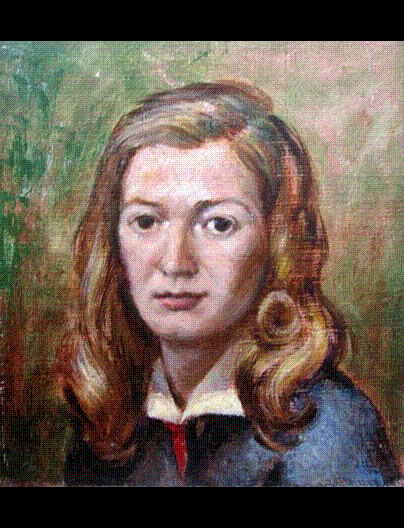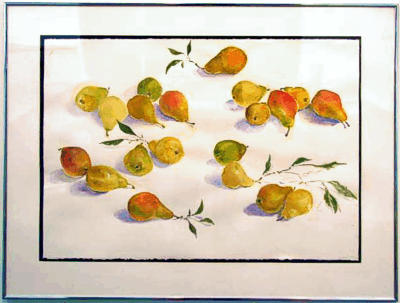
|
|
L.P. Hodgell Introduction

Lois P. Hodgell
BIOGRAPHY
Lois was born in 1922 in Oshkosh, WI, where she attended high school. During World War II, she joined the navy and served as an air traffic controller. Following the war, she returned to Wisconsin, went to college on the G.I. Bill, married Bob Hodgell, had two children, divorced, and in 1961 received her MFA.
The next year she joined the art staff at University of Minnesota-Morris, eventually becoming the chair of the Art Department. She served in this position until her retirement in 1993, at which time she returned to the family home in Oshkosh.
In 2000, simultaneously with her former husband's death, she plunged into dementia and remained in that state until her death in 2006.
ARTIST STATEMENT BY LOIS HODGELL FOR HER HFA GALLERY EXHIBITION, APRIL 1998
These paintings are examples selected from a fairly long period of work. The earliest here is "View through the Window, with Peonies," done when I had just begun to use watercolor in place of oils. Later, I turned to a faster method of painting, done almost entirely outside, and often finished in one long sitting. An example of this is "Phlox Along the Border." These were spontaneous, almost unplanned, with the composition developing as I went. This was, for me, a very enjoyable way to work, with about one in three being successful. However, it was limited by many things: the light available, the general state of the weather, and especially on how I felt about painting that day. Also, the brush strokes generally had to be put down directly, with no additions made to them. This method, when successful, gave the work a fresh and lively appearance.
 I worked this way for several years, but its limitations began to bother me. It left too much to chance. Then, one year in New York, I saw an exhibit of watercolors by Bernard Chaet: arrangements of similar objects, very simple but rich and painterly, with large open unpainted areas, but quite different from the work of Wayne Thiebaud. I saw that the composition could be preplanned; it could be done in winter, and best of all, some colors could be built up, while others could be put down with one stroke, as in both of the "Radish" paintings. I tried many different subjects: apples are great and they change very slowly if at all (my refrigerator was full of limp radishes!) Cherries were another challenge as they were so much alike. But still there can be action flowing through the composition using this very sameness.
I worked this way for several years, but its limitations began to bother me. It left too much to chance. Then, one year in New York, I saw an exhibit of watercolors by Bernard Chaet: arrangements of similar objects, very simple but rich and painterly, with large open unpainted areas, but quite different from the work of Wayne Thiebaud. I saw that the composition could be preplanned; it could be done in winter, and best of all, some colors could be built up, while others could be put down with one stroke, as in both of the "Radish" paintings. I tried many different subjects: apples are great and they change very slowly if at all (my refrigerator was full of limp radishes!) Cherries were another challenge as they were so much alike. But still there can be action flowing through the composition using this very sameness.
The most complex painting here, and the most difficult, was "The Pears." Their very size and their tendency to point in one direction made the composition and the "action" difficult to control. Also, they tend to change color from one day to the next. But even so, I could arrange them, overpaint them, and still have the lightness of open, unpainted paper. I think that this is my best painting so far.
Faure, Gabriel. Pavane, OP. 50. Orchestre du Capitole de Toulouse. Michel Plasson. CD. Seraphim, 2000.